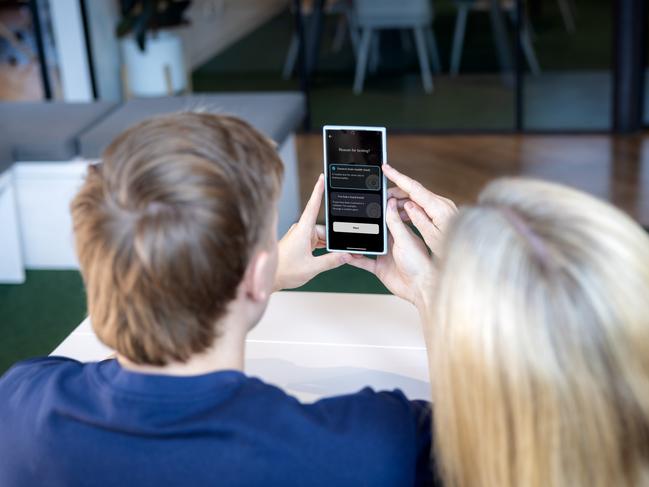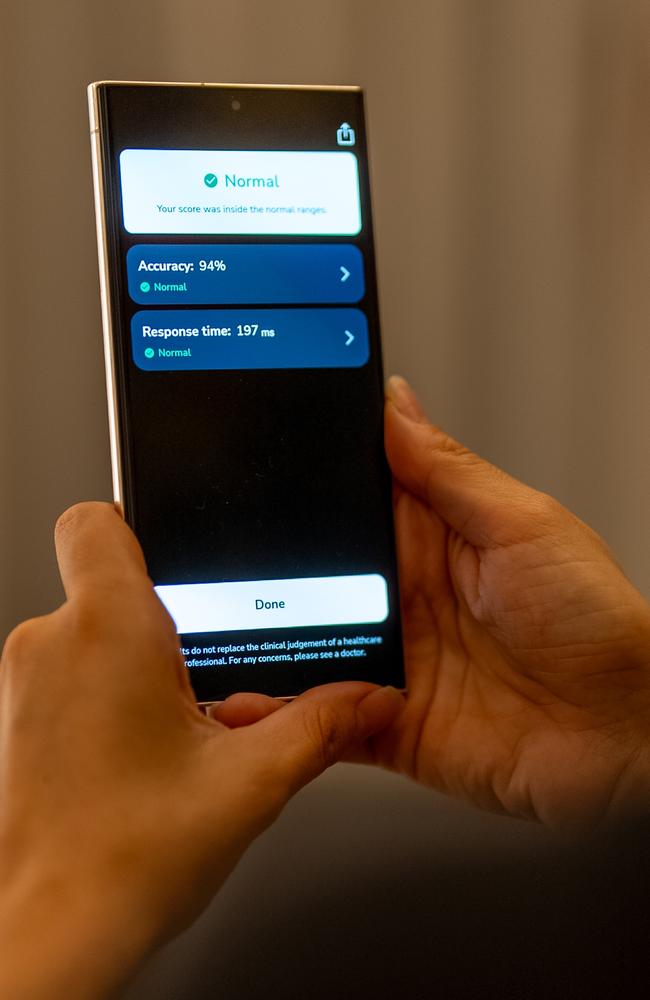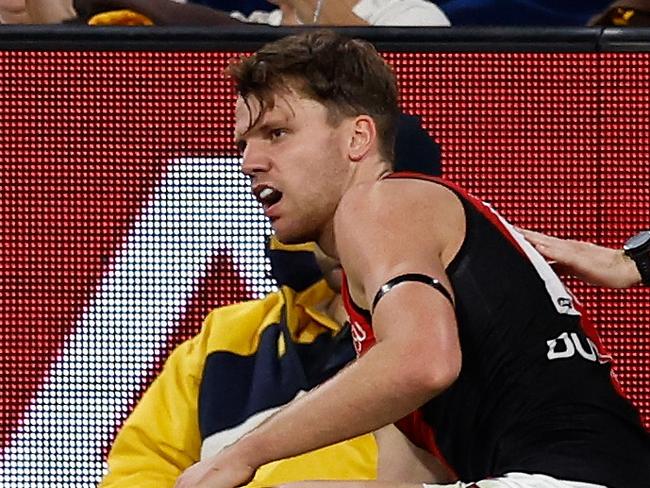BrainEye app delivers 100 per cent concussion detection rate
The concussion dilemma is one of the key battles facing the AFL currently, but a new smartphone app has emerged as a possible aid after delivering stunning results in an AFL-backed clinical trial.
A new smartphone app has emerged as a powerful tool in the battle against concussion after delivering stunning results in an AFL-backed clinical trial.
The new BrainEye app could be set for mass take-up at grassroots and community sporting level across the globe after tests on 348 AFL players in 2022 delivered a 100 per cent success rate, helping detect 11 concussions.
The groundbreaking technology involves a 60-second test and world-leading eye-tracking technology which can alert players to worrying changes in their brain function after head knocks and whiplash incidents.
The test requires participants to track a moving dot on a screen and is considered the only objective and economical test of its kind, according to researchers.

It is available now for $7.49 a month on the app store.
Importantly, the new weapon will give parents and sporting participants the ability to help detect players’ concussion from the palm of their hands on the sidelines.
The results of the Monash University trial were published in the medical journal Sports Medicine and have fuelled hopes the technology will give parents and players more clarity and peace of mind amid the difficulties of detecting concussions at lower sporting levels.
The app does not diagnose concussions, but alerts users to changes in brain function compared to baseline norms, and flags the need for medical attention.
Associate Professor and BrainEye chief scientific officer Joanne Fielding, who has studied neuroscience for 25 years, said the technology was “truly revolutionary”.

“If I had this in my hand 20 years ago when I was a parent sitting on the sidelines, I would have felt much more comfortable with my child playing on after a collision,” Fielding said.
“You are looking at a moving dot as it moves around the screen and any deviation from your normal (eye movement) is a red flag in a sense.
“It doesn’t even require a head knock for a concussion to take place from a hard tackle or a heavy landing. It doesn’t even have to involve the head.
“As long as there is a whiplash action of the neck you are at risk.
“But if you have got a tool which will tell you in terms of whether their brain function is his or her normal, then that is your first step (to a concussion diagnosis).”

Fielding said subjective tests are more difficult to perform at grassroots level without professional medical assistance.
“You have got very few tools which can help you,” Fielding said.
“Asking your child to count backwards. Think of the SCAT (test) and the way those (memory assessment) questions are asked.
“It is not something you may want to do in the first place as a parent on the sidelines.
“This is the first really objective measure that (identifies) something is changing in the context of brain function.”
BrainEye CEO Steve Rosich said the AFL study was “successful validating the technology” after recent regulatory approvals as a medical advice.
Interest has come from international soccer, rugby and ice hockey leagues.
“Numerous sporting leagues have reached out internationally because unfortunately concussion is a global issue in sport and we are pleased to be able to offer a unique solution to assist in its detection,” Rosich said.
“In an ideal world, we would love for this to be in the hands of parents around the world.”





To join the conversation, please log in. Don't have an account? Register
Join the conversation, you are commenting as Logout